Temples in Chiang Mai
& Colorful Suthep Road

During its early years, Chiang Mai University was famed for its splendid scenery due to its location at the foothills of Doi Suthep surrounded by a fertile natural environment.

Such colorful environment not only existed on campus, but also in the nearby areas such as Suthep Road. Here, the most outstanding tree was the Phayom tree (Shorea Roxburghii), which at one time flourished with a great number growing along the length of Suthep Road, from Suandok Hospital to the foothills of the mountain.





As the Suthep Road was affected by city development, by 1994 there were only six Phayom trees on Suthep Road. Three were in front of the market and three were located at the intersection to Nimmanhaeminda Road, but not long after, all six had been sacrificed.

Regretful or nostalgic feelings alone will not help to bring back the Phayom trees on Suthep Road. However, we are grateful that HRH Princess Sirindhorn took a serious interest into the plight of Suthep Road's Phayom trees and initiated a project on 22 February 1994 to return these trees to the area.

Even though there is no longer a shady row of Phayom trees along both sides of Suthep Road, the pathway to Doi Suthep, an attempt to revive such local heritage is ongoing. It may take more than a lifetime for an effective result, but it is certainly something worth waiting for.

Temples or Wat
In everyday language in Thailand, a wat is any place of worship

Wat Lok Moli
Wat Lok Molee or Lok Moli is another treat of Chiang Mai. This is an old temple, with it's impressive chedi being built around 1527.

The entry of the Wat is protected by two colorful images of Todsagan.



It is said to house the ashes of the royal members of the Mengrai Dynasty.

I particularly liked the large hall in the front of the chedi, with it's large beautiful Buddha image.



























Wat Gate Khar Rham


Upon discovering that inside his neighborhood temple, Wat Gate Khar Rham, stood a closed down ruinous teak building that used to be the residence of past abbots, as well as an empty adjoining concrete building at the temple’ s river street entrance.



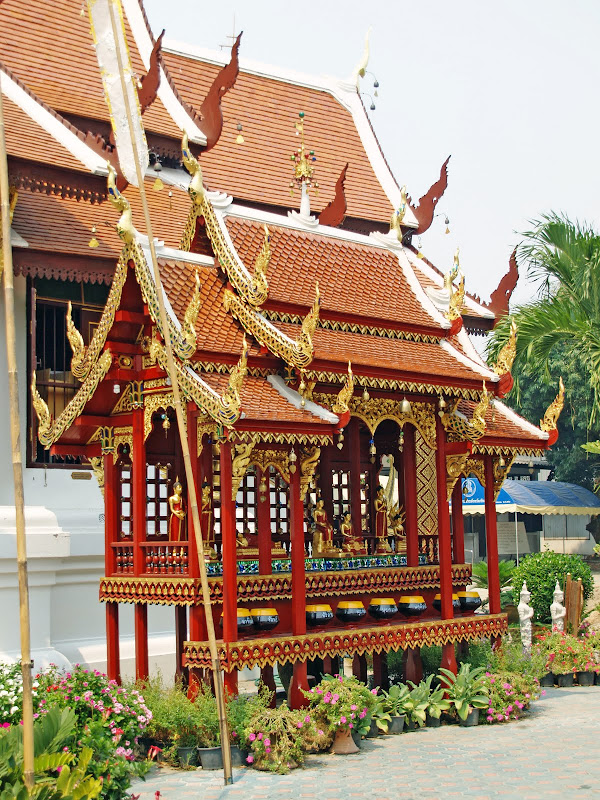






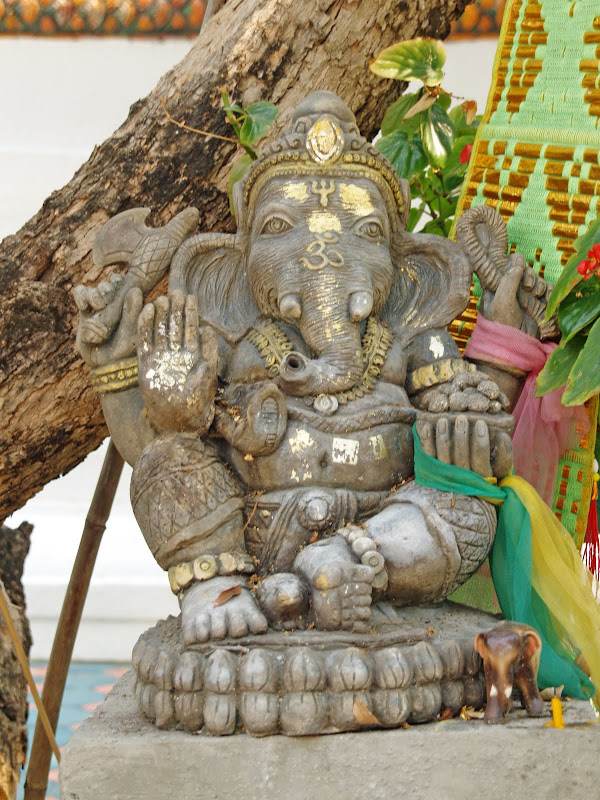










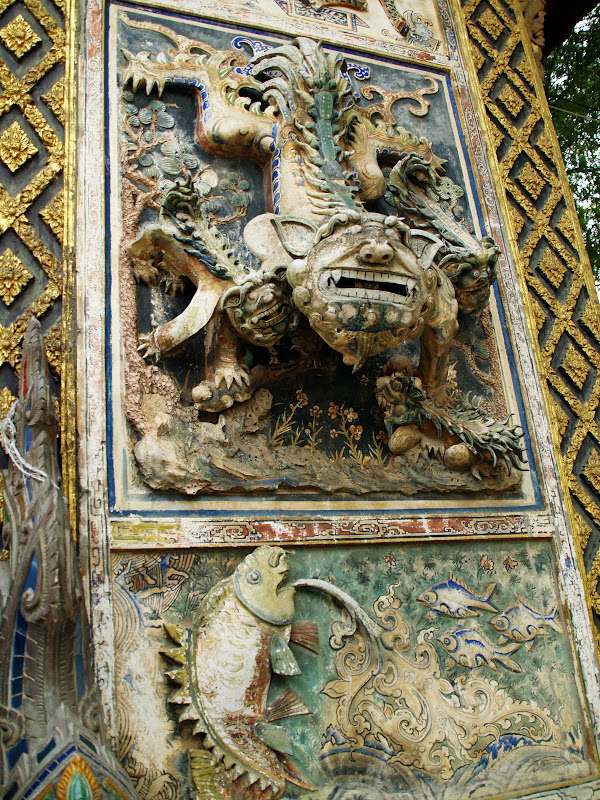






With his contagious enthusiasm and drive, a small museum was started from these premises using its own collections of antiques and donated artifacts and relics.

















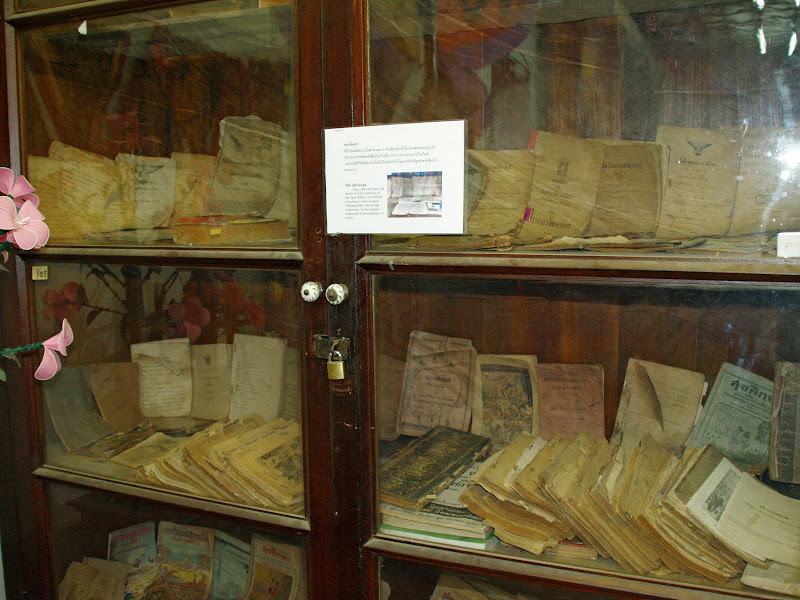






Items in the museum include priceless old pictures of Chiang Mai, antique drums of all sizes, northern household artifacts, old coins, ancient potteries and large collections of rare fabrics and old costumes that once belonged to Chiang Mai’s past royal families. Highly valuable items have been inventoried by the Fine Arts authorities and are locked in glass display cases. Additional display cabinets are being built with left over wooden coffin doors, donated by the Temple.

Photograph of execution, dated back to 1917



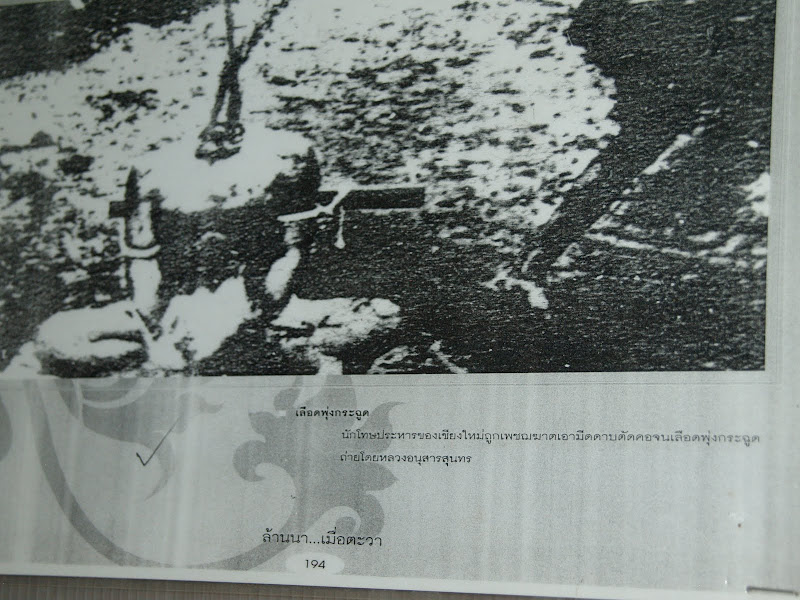































No comments:
Post a Comment